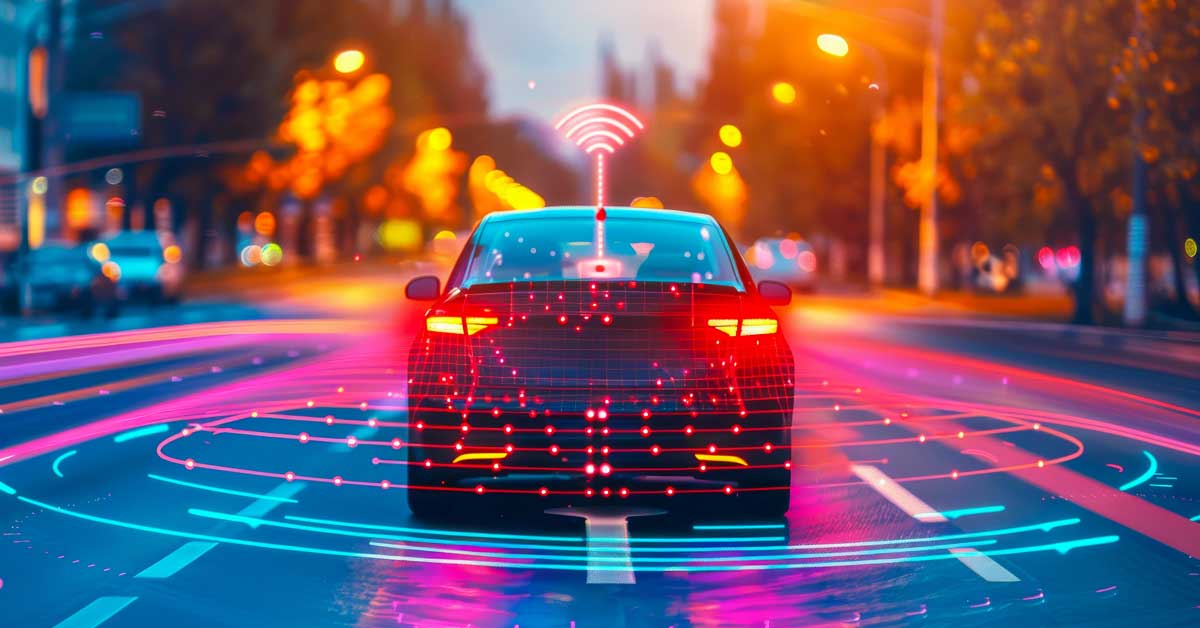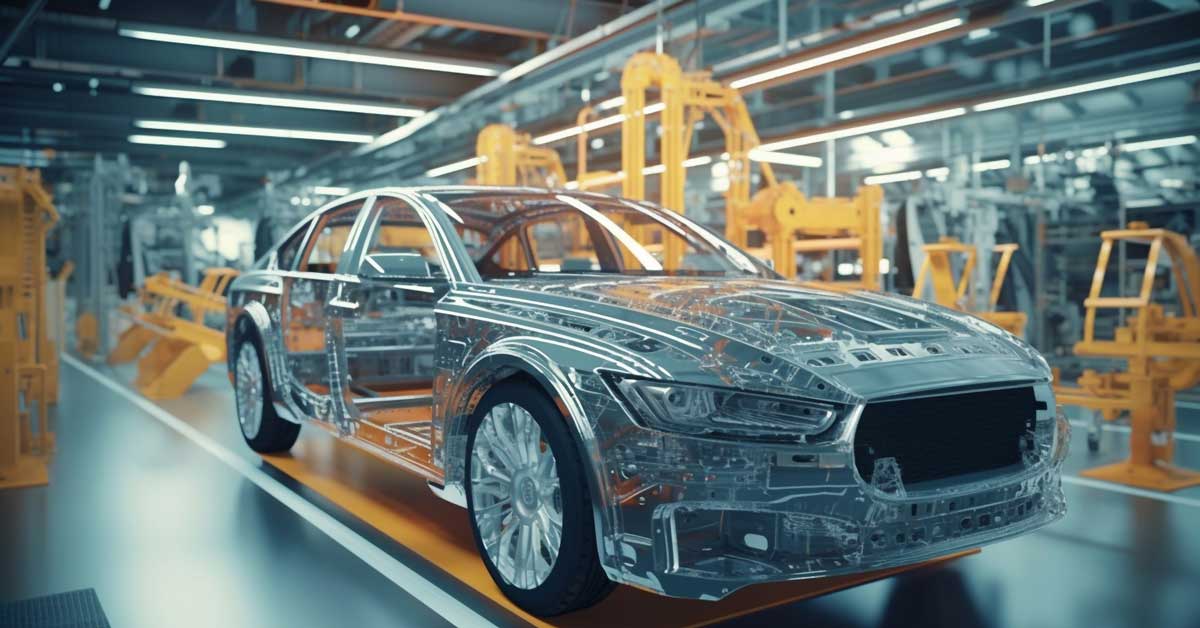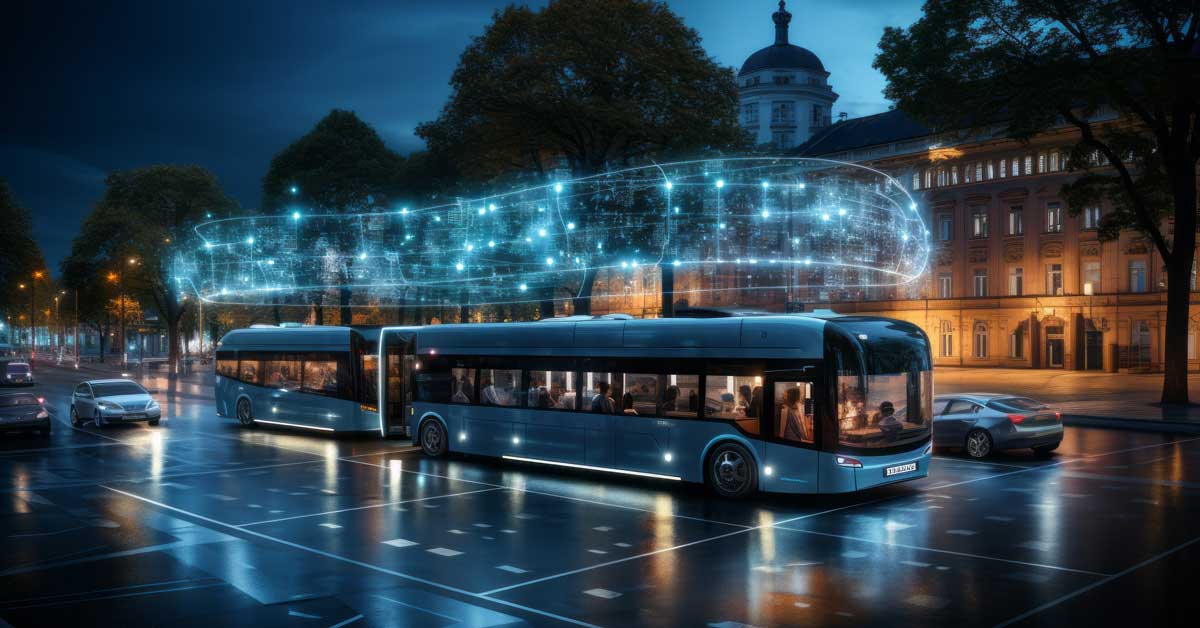This article marks the beginning of an insightful blog series dedicated to exploring the transformative impact of Edge AI on various sectors, starting with autonomous vehicles. Over the coming weeks, we will delve into the nuances of Edge AI, its technical foundations, and how it’s reshaping industries such as autonomous vehicles, consumer electronics, IoT devices, and smart sensors. Stay tuned as we unpack this cutting-edge technology’s advancements, challenges, and future prospects.
Imagine a world where cars drive themselves, adapting instantly to their surroundings with minimal latency. This isn’t science fiction; it’s the promise of Edge AI autonomous vehicles. Edge AI combines artificial intelligence and edge computing to process data locally, right where it’s generated, instead of relying on centralized cloud servers. In this blog, we’ll explore Edge AI’s profound impact on autonomous vehicles, offering insights into its advantages, challenges, and future potential. Whether you’re a CTO, CMO, tech enthusiast, CEO, or business owner, understanding this technology’s implications can help you stay ahead of the curve.
Understanding Edge AI
Edge AI refers to the deployment of AI algorithms on devices close to the source of data generation, such as sensors in autonomous vehicles. This approach reduces the need for constant communication with distant servers, resulting in faster decision-making and lower latency. By processing data at the edge, these vehicles can make real-time decisions essential for safe and efficient operation. Edge AI-powered vehicles can also communicate with other vehicles, road infrastructure, and pedestrians, enhancing their situational awareness and overall performance.
The integration of Edge AI into autonomous vehicles brings several notable benefits. Primarily, the ability to process data locally enhances the vehicle’s speed and responsiveness, which is crucial in dynamic driving environments. This reduces the lag time associated with sending data to and from cloud servers, ensuring that autonomous vehicles can react instantaneously to sudden changes such as a pedestrian stepping into the road or an unexpected obstacle appearing. Additionally, decentralized data processing helps to maintain a higher level of privacy and security, as sensitive information does not need to be transmitted over potentially vulnerable networks.
Google’s Waymo Self Driving Cars
As of June 2024, seven hundred Waymo self driving cars are on public roadways.
In this captivating video, we explore how Google’s Waymo self-driving cars are making waves in San Francisco and Los Angeles, showcasing the transformative power of autonomous technology in urban environments. Watch as these vehicles navigate bustling streets, interact seamlessly with traffic, and adapt to various driving conditions, all while prioritizing safety. With real-time data processing powered by Edge AI, these cars demonstrate unprecedented efficiency and reliability, paving the way for the future of transportation. Join us on this journey to witness the evolution of mobility and the potential for self-driving cars to reshape our cities.
Enhancing Real-Time Decision Making

Edge AI plays a crucial role in advancing the safety, efficiency, and robustness of autonomous driving technology. It enhances real-time decision-making by processing data on the vehicle itself, thereby reducing delays associated with traditional cloud-based systems. For instance, an autonomous car can analyze and respond almost instantaneously to unexpected obstacles, improving safety and performance, especially in challenging driving conditions like heavy traffic or adverse weather.
Additionally, Edge AI fosters a more reliable autonomous driving experience through redundancy and fault tolerance. By enabling multiple AI processes to occur independently at the edge, vehicles can maintain functionality even if one process fails. This approach also reduces bandwidth usage, mitigating the risks of network congestion and data bottlenecks. Collectively, these advantages illustrate the instrumental role of Edge AI in the future of autonomous driving.
Improving Safety and Reliability

Safety is paramount in autonomous driving, and Edge AI plays a crucial role in enhancing it. With the ability to process data locally, vehicles can detect and react to hazards more quickly. Think of a pedestrian suddenly stepping onto the road. Edge AI allows the vehicle to recognize the danger and take immediate action, potentially preventing accidents. This localized processing also adds a layer of reliability, as the vehicle remains operational even if network connectivity is lost. In contrast, cloud-based systems may experience downtime if connection issues arise.
Beyond immediate hazard detection, Edge AI contributes to more nuanced safety measures through continuous environment monitoring and adaptive learning. This means the vehicle can learn from its surroundings, improving its response to repeated patterns of certain conditions like heavy pedestrian traffic near schools or sharp turns in mountainous roads. Edge AI systems can be continually updated with new data and software enhancements without needing extensive downtime, ensuring the vehicles are up-to-date with the latest safety algorithms and threat detection models.
Lastly, Edge AI facilitates better fleet management for companies that operate multiple autonomous vehicles. By collecting and processing data locally, fleet operators can monitor vehicle performance and health in real-time, scheduling proactive maintenance and detecting potential issues before they lead to breakdowns or safety incidents. This degree of oversight ensures that each vehicle remains in optimal working condition, enhancing the overall safety and reliability of autonomous transportation systems.
Reducing Operational Costs

Edge AI can significantly reduce operational costs for autonomous vehicle fleets. By minimizing data transmission to cloud servers, companies can save on bandwidth and storage expenses. Additionally, local processing reduces the reliance on expensive, high-speed internet connections. Over time, these cost savings can be substantial, making autonomous vehicles more economically viable for businesses. This can accelerate the adoption of autonomous vehicles, leading to increased efficiency and productivity in transportation.
Enhancing User Experience

For passengers, the user experience is a critical aspect of autonomous travel. Edge AI contributes to a smoother and more responsive ride. Imagine a scenario where the vehicle needs to reroute due to sudden traffic congestion. Edge AI enables quick recalculations and adjustments, ensuring passengers reach their destinations efficiently. This improved responsiveness can lead to higher satisfaction and increased adoption of autonomous vehicles.
Pros and Cons of Edge AI Autonomous Vehicles

Pros
One of the most significant advantages of Edge AI is low latency. Immediate data processing allows vehicles to make real-time decisions, thereby enhancing safety and performance. The quicker a vehicle can respond to its environment, the safer and more efficient it becomes.
Another considerable benefit is reliability. With continuous operation even without network connectivity, Edge AI ensures that the vehicle can always make critical decisions. This resilience is especially important in areas with poor network coverage or temporary signal loss.
Cost savings present another advantage. By reducing the need to constantly transmit data to and from cloud servers, operational expenses connected to bandwidth and storage are minimized. This cost efficiency makes autonomous vehicle fleets more economically viable, encouraging broader adoption.
Cons
Despite its advantages, Edge AI does come with hardware limitations. Edge devices often have constraints in terms of processing power and storage capacity. This limitation can affect the vehicles’ ability to process complex algorithms locally, posing a challenge that needs to be overcome with advanced technology and engineering.
Complexity is another challenge. Integrating Edge AI into autonomous systems requires sophisticated algorithms and robust infrastructure. The intricacies involved in ensuring seamless operation can be a hurdle for vehicle manufacturers looking to adopt this technology.
Finally, security risks are a significant concern. Localized data processing means that Edge AI systems can be more vulnerable to physical tampering and cyber threats. Securing the data and ensuring the integrity of the processing units are critical tasks that must be addressed to maintain the safety and reliability of autonomous vehicles. Understanding these pros and cons is essential for businesses and technologists aiming to harness the full potential of Edge AI in autonomous vehicles.
Future of Edge AI in Autonomous Vehicles

The future of Edge AI in autonomous vehicles looks promising. With advancements in AI algorithms and edge computing hardware, we can expect even greater capabilities and efficiencies. Upcoming developments may include more sophisticated object detection, predictive maintenance, and enhanced passenger personalization. These innovations will continue to push the boundaries of what autonomous vehicles can achieve. As technology improves, it is vital to address the associated challenges and risks to ensure the safe and seamless integration of Edge AI in autonomous vehicles.
The journey towards fully autonomous vehicles continues, with Edge AI playing a significant role in shaping its future. Therefore, businesses, researchers, and policymakers must collaborate and invest in this innovative technology to bring us closer to a safer and more efficient transportation system. The potential benefits are vast, and with continued development and refinement, we can expect even greater advancements in the near future. Embracing Edge AI in autonomous vehicles will undoubtedly pave the way towards a smarter and more connected future. Let’s continue to explore the possibilities and strive towards a world where vehicles can navigate the roads with precision, speed, and safety through the power of Edge AI.
Conclusion
Edge AI is set to revolutionize autonomous vehicles, offering significant improvements in safety, efficiency, and user experience. By harnessing the power of local data processing, these vehicles can make real-time decisions, ensuring smoother and safer rides. Enhanced reliability, even in areas with poor network connectivity, further solidifies Edge AI’s role in the future of transportation. Additionally, the operational cost savings associated with minimized data transmission can lead to a more economically viable approach for businesses, accelerating the adoption of autonomous vehicles.
Understanding the full impact and potential of Edge AI is crucial for business leaders and technologists. Anticipating these changes allows for better strategic planning and investment in infrastructure that supports this advanced technology. As we continue to explore the possibilities of Edge AI, it’s essential to address the challenges related to hardware limitations, complexity, and security risks to fully leverage its benefits.
Stay tuned for our next blog in the series where we’ll delve into Edge AI in Consumer Electronics. We’ll explore how this technology is transforming everyday devices, from smart home systems to personal gadgets, enhancing daily life through improved functionality, responsiveness, and user experience. The journey of Edge AI is just beginning, and its influence is expected to permeate various sectors, bringing unprecedented advancements and efficiencies. Embracing this innovation will undoubtedly pave the way towards a smarter, safer, and more interconnected world.







